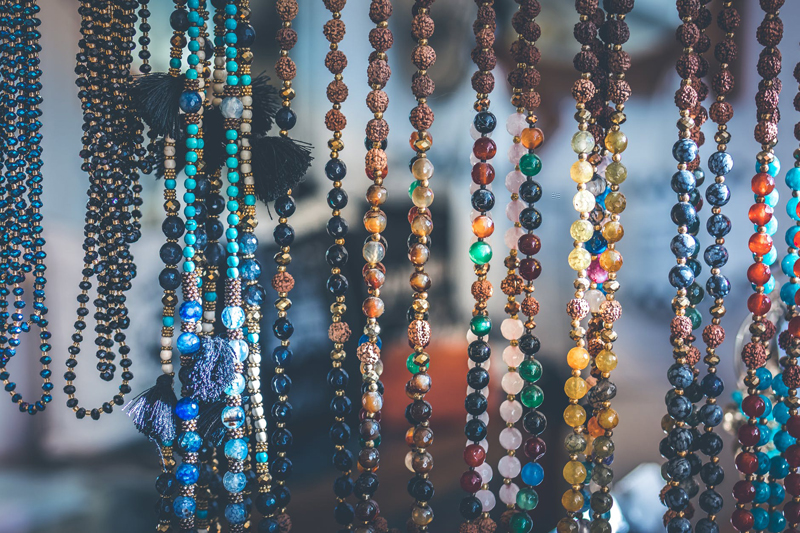Basic Beading : Flat Odd Count Peyote


I've got a few requests for instructions for stitching up the earrings I posted during the Earring Advent Event. The easiest way is just to turn the graph sideways and brick stitch them, but that's now how I stitch up most of the earrings I graph on that graph paper.
I use odd count peyote stitch with a slight variation. Instead of weaving back through the beads to get to the right place, I slip my needle and thread through the thread loop on the previous row, sort of like you do when you add beads in brick stitch, then I work the next row of beads. I'm not entirely sure who came up with this method first, I started doing it because I was working on a large "brick stitched" phoenix necklace and I wanted the speed of peyote. I talked to Lisa Lane shortly after that and we compared notes and found out we did it the same way. Since then, both of us have told a lot of people, and I'm sure a lot more figured it out on their own.
The advantages to this method are speed, peyote, for me at least, is a lot quicker then brick stitch, and it's less thready. The disadvantages? Well, you have one edge with thicker thread then the other, and it's less thready. Why is that a disadvantage too? For things like earrings, you want some structure, and the peyote isn't as stiff as brick stitch. I just use clear nail polish on the backs of mine, but you might want to consider that before you choose a method.
I was talking to a friend about doing my earrings in odd count, she uses the same method I do, and she said "I would, but I hate increasing in odd count." I don't increase. I start from the middle and work out to the ends, so I'm just decreasing on both ends.
The thread from the previous rows is in black and the working thread is red, and the beads from the previous rows are gray scaled.

That's one of the snowflake graphs from the Earring Advent Event, I marked my start row with red dots.
You will need to use a length of thread about 3 feet long. Get a random bead to use a stop bead. I use a red druk I keep on my bead tray just for that purpose. Pass the needle and thread through the stop bead, then wrap around the bead to the opposite hole, and pass it through again. The bead is in place on the thread to "stop" the beads, but it's easily removed later so you can work with the other end of the thread. You'll want to put the stop bead in about the middle of the thread, and put a needle on both ends.


Those are the first 2 rows of beading. The first row is the row I marked as my start row, and the second row works in nicely until the last bead, it's hanging off free because it's an up bead at the end of the row. That won't do!

Pass the needle up through the first bead added (not the stop bead!), and work the next row.

Pull off the stop bead, and with that end of the thread, pass it through the bead on the row beneath, and work that row.

Hopefully this diagram makes what I'm saying a bit clearer. You want to cross the two working ends, so the one that was on the bottom is now working the top rows, and the one on the top is working the bottom rows.

At the end of the previous row, it's pretty straight forward regular peyote, but when you get back across you have the same problem with an "up" bead as the last bead. This is where that thread loop technique I was talking about comes in. See how it goes up and loops around the previous rows thread? Then you pass the needle and thread through the same bead you came out of and work the next row.
Try it and see what you think of it.
You Should Also Read:
Earring Advent Event
Even Count Flat Peyote
Earring Graph Paper

Related Articles
Editor's Picks Articles
Top Ten Articles
Previous Features
Site Map
Follow @shala%5Fbeads
Tweet
Content copyright © 2023 by Shala Kerrigan. All rights reserved.
This content was written by Shala Kerrigan. If you wish to use this content in any manner, you need written permission. Contact Shala Kerrigan for details.






